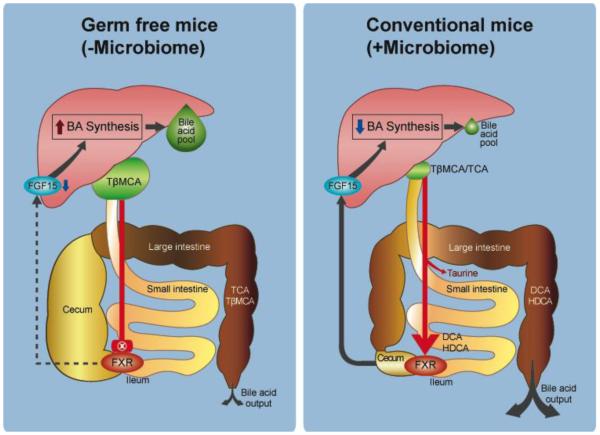Figure 2.
Gut Microbiota Influence bile acid pool size in mice through metabolism of FXR-antagonist, tauro-β-muricholic acid. Panel A: Inhibition of intestinal FXR by T-βMCA increases bile acid pool size through enhanced bile acid synthesis in the liver and efficient enterohepatic circulation due to high levels of apical sodium bile salt transporter (IBAT; SLC10A2) in the ileum. Panel B: Metabolism of T-βMCA, and production of FXR-agonists including secondary bile acids by gut microbiome results in FXR-induced release of FRF-15 in the intestine and inhibition of the rate-limiting enzyme in bile acid synthesis, cholesterol 7α-hydroxylase (CYP7a1) in the liver. Reduction in bile acid synthesis coupled with downregulation of ASBT results in reduction in bile acid pool size.

